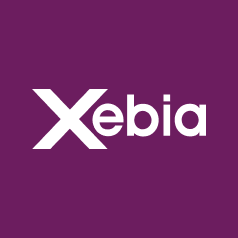Google Cloud Next 2025 wrapped, unleashing a significant slate of updates! While the announcements spanned the stack – from infra to data and AI – the clear headliner, especially for technically-minded folks like us at Xebia, was the major push into AI Agents. Google unveiled a comprehensive framework for building, deploying, and orchestrating agentic systems. Let's dig into the key technical takeaways, starting with the agent ecosystem.
The Agentic Era: Frameworks for Autonomous Systems
The biggest buzz was undoubtedly the 'Agentic Era.' Google is betting heavily on autonomous AI systems capable of understanding complex requests, sophisticated multi-step planning, dynamic tool utilization, and even collaboration. To enable this, they launched a suite of components:
- Agentspace: A discovery and governance layer for enterprise users to find and securely interact with available agents. Think service catalog meets execution environment for agents.
- Agent Development Kit (ADK): Designed to streamline the developer experience for creating robust agents, likely abstracting common patterns, state management, and tool integration APIs.
- Agent2Agent (A2A) Protocol: An essential piece for interoperability, defining how disparate agents (potentially built by different teams or vendors) can communicate state, delegate tasks, and coordinate actions. Standardization here is key.
They also previewed specialized agents targeting domains like SecOps, DevOps (Code Assist agents potentially leveraging Gemini), Data Analytics, Customer Engagement, and IT Ops. For us at Xebia, this structured, framework-based approach to agent development is crucial for building scalable and maintainable AI solutions beyond simple chatbots.
Next-Gen AI Infrastructure: TPUv7 "Ironwood"
On the infrastructure front, the big reveal was Ironwood, Google's 7th-gen Tensor Processing Unit (TPU). The performance leap is substantial: a claimed 3,600x improvement over their first-gen TPU, delivering 42.5 exaflops of peak AI compute (likely BF16/FP8).
Crucially, this isn't just raw FLOPS; Google emphasized a 29x gain in energy efficiency (performance/watt) compared to TPUv1, vital for sustainable large-scale deployments. As a core component of their AI Hypercomputer architecture (integrating TPUs, GPUs, optimized storage, high-bandwidth networking like Jupiter, and software orchestration), Ironwood is engineered to accelerate the entire lifecycle of large models – training, fine-tuning, and low-latency serving. Availability in Google Cloud is slated for later this year. This kind of hardware is foundational for the demanding, large-scale AI workloads Xebia frequently tackles.
Expanding the AI Palette: Gemini Updates and Vertex AI Consolidation
The AI model and platform layer also saw significant evolution. Key updates include:
- Gemini Family Expansion: Introduction of Gemini 2.5 Pro and the latency-optimized Gemini 2.5 Flash. Both are touted as having enhanced reasoning capabilities ("built-in thinking" likely refers to improved multi-step reasoning or function calling) and improved performance benchmarks.
- Vertex AI Enhancements: Positioned as the unified MLOps platform, Vertex AI received major updates, particularly consolidating generative media capabilities. This includes integrating upgraded models like Imagen 3 (text-to-image), Chirp 3 (speech synthesis/audio gen), Lyria (text-to-music via DeepMind research), and Veo 2 (video generation). Platform usability and efficiency improvements aim to streamline model development, evaluation, deployment, and monitoring pipelines.
For hybrid cloud strategies, Gemini models are landing on Google Distributed Cloud (GDC) in Q3 2025, enabling on-premises or edge inference. These advancements in both models and the MLOps platform directly impact the sophistication and deployment speed of AI applications Xebia designs and builds.
Cloud WAN: Leveraging Google's Backbone for Enterprise Networking
Networking saw the launch of Cloud WAN, a managed WAN service enabling enterprises to directly utilize Google's global backbone network. This leverages the same low-latency, high-bandwidth infrastructure underpinning services like Search and YouTube (private fiber spanning over 200 countries).
Google is promising up to 40% faster connectivity (likely compared to standard internet paths) and potential TCO reduction versus traditional MPLS or complex SD-WAN overlays. It provides a high-availability, secure L3 connectivity fabric designed to simplify interconnectivity between data centers, multiple cloud environments, and branch offices.
Google Unified Security (GUS): AI-Infused SecOps
Addressing security complexity, Google introduced Google Unified Security (GUS). This aims to be an integrated security platform providing broad visibility and control – a 'single pane of glass' across the attack surface. It heavily leverages AI/ML, infused with Mandiant's threat intelligence feeds and analysis capabilities, for improved threat detection efficacy and faster response times (MTTD/MTTR).
A key technical aspect involves using AI agents for automating security workflows. This could include tasks like intelligent alert triage, automated investigation enrichment (pulling context from various sources), and potentially triggering predefined response actions, functioning similarly to advanced SOAR platforms. This tight integration of AI within SecOps is critical, a view strongly shared by Xebia for building more proactive and resilient systems.
Conclusion: Full-Stack AI Focus with Agentic Systems at the Core
The key technical takeaway from Google Cloud Next 2025? A strategic, full-stack commitment to an AI-driven future, heavily centered on enabling and orchestrating agentic AI systems. Google is clearly investing significantly across all layers – from custom silicon like Ironwood and foundational models like Gemini 2.5, to the comprehensive Vertex AI MLOps platform and specialized tools like the Agent Development Kit.
We at Xebia see this cohesive, integrated strategy as crucial for empowering organizations to build the next wave of sophisticated, value-driven AI applications that go far beyond basic task automation.
Disclaimer: By the way, this article was generated using the new Gemini 2.5 Pro Model. We still have to fine tune the model to replicate the tone of voice of Xebia but we have no doubt this will be possible ;)





